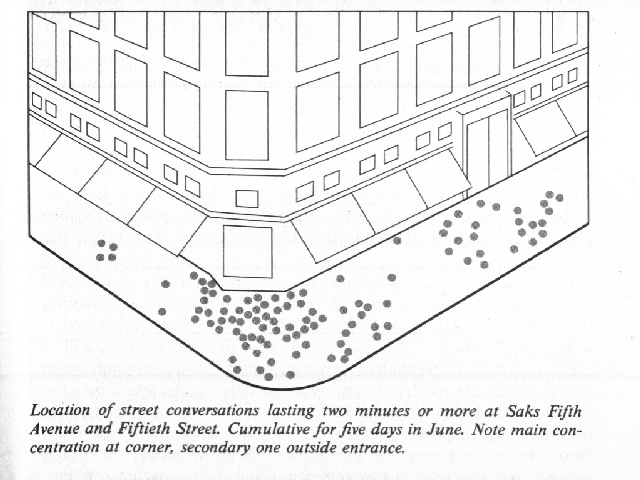Extract from Leo Hollis's excellent blog "Cities are good for you". This, coincidentally, is also the title of his forthcoming book. Visit his blog to find out more, then advance order his new book. In 1956 William H Whyte, the executive editor of ‘Fortune’ magazine, wrote of The Organisation Man. In his devastating analysis, Whyte suggested that the post-war generation had been encouraged into conformity, happy to exchange their own individuality for participation into the corporate dream, that not only dictated how they worked but also offered them the banal ideal of a secure life, the comforts of suburbia, the steady accumulation of unnecessary things.
His conclusion claimed that the culture of Organisation Man, the surrender of self to the mythic corporation, was the very opposite of the rugged individualism that once built America.
Whyte’s fascination in how the planning of the new suburbs satisfied the every need of Organisation Man ignited a passion in the role of planning and architecture in shaping American social life. In an essay in 1953 ‘How the New Suburbia Socialises’ he used his own neighbourhood of Forest Park outside Chicago to show how the design of play areas, driveways and stoops affected interactions; how keeping the front lawn clean leads to strong ties to neighbours across the road rather than over the back yard fence; why owning a house that was built in the early stages of the development can make you more popular. In time, however, Whyte began to focus his attention away from the suburbs onto the city centre.
It would be almost a decade before Whyte put his ideas into practise, when the New York Planning Commission hired him to develop a new approach to thinking about the city. Whyte began by looking at previous best practise but was surprised to find no research on the efficacy of any of the most recent projects; he was stunned that there were ‘no person on the staff whose job it was to go out and check whether the places was being well used or not, and if not, why.’ How could a city improve if it could not learn from its mistakes, or even find out if it had made any mistakes?
He hired a group of sociology students from nearby Hunter College to start conducting serious studies on how people actually used places; and so begun ‘the street life project’, probably the first time that rigour and method was brought to bear on the ballet of the streets. The results were revelatory. From this study of the street ‘the river of life of the city, the place where we come together, the pathway to the center’, Whyte built up his new idea of how the city really worked.
[vimeo http://vimeo.com/6821934 w=700&h=390]
How do people walk down the street? How often do they bump into friends? Where do people stop to chat? Does bustle or a quiet space make a happy place? How much space should you leave as you pass someone? Who can you touch and what kinds of gesture are acceptable in public? Does a vendor get more business, or a busker more change, on a narrow street or a wide thoroughfare? Far more than the philosophical or aesthetic musings of visionaries, these are the real life questions that can transform a city. Whyte produced his results in two books ‘The Social Life of Small Urban Spaces’ in 1980 and ‘City: Rediscover the Centre’ in 1988.
In both books he saw the decline of the city as a reflection of the changing economic relationship between people; as our lives became increasingly mediated, we were less likely to interact, to bump into each other, and as a result the city was losing its most fertile function: the place where strangers meet. First, studying the street, then making a series of observations on the social life of our public plazas, Whyte explored the ways how these public spaces were used, how they developed their own ecology, what worked and what caused problems. Thus he set out some opening observations on how people used the street:
Pedestrians usually walk on the right. (Deranged people and oddballs are more likely to
In a similar fashion, Whyte also looked at how and why people used the public squares and plazas of the city. He was surprised to note, watching the flow of human traffic outside Saks on Fifth Avenue that most people stop to talk either on the street corner in the centre of the flow, or right outside the shop entrance.
He also observed lunchtime in Seagram Plaza and how the spaces of the plaza was populated – men more likely to sit closer to the pathways and on benches while women preferred more secluded places; lovers rarely hiding themselves; if there are moveable chairs they tended to be dragged in all directions, each new occupant preferring to find their own site; particular groups are likely to rendez vous in the same places. In his most memorable phrase he concluded: ‘what attracts people most is other people. Many urban spaces are being designed as though the opposite were true.’
Whyte proved that people used the city in different ways than the experts thoughts and often did the exact opposite of what the planners intended.

